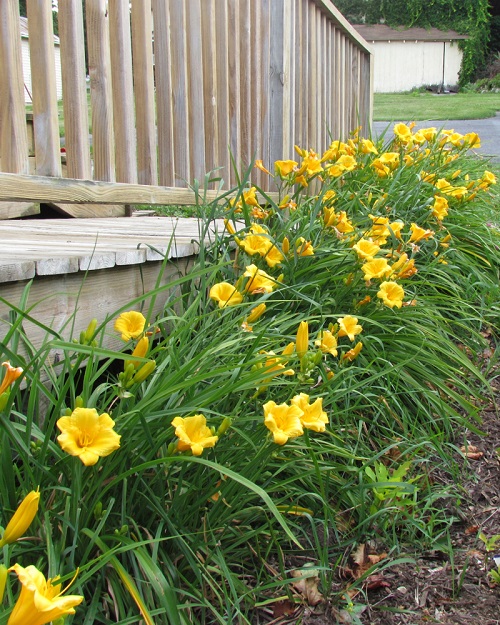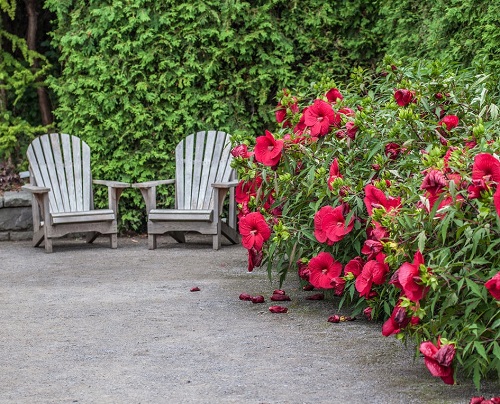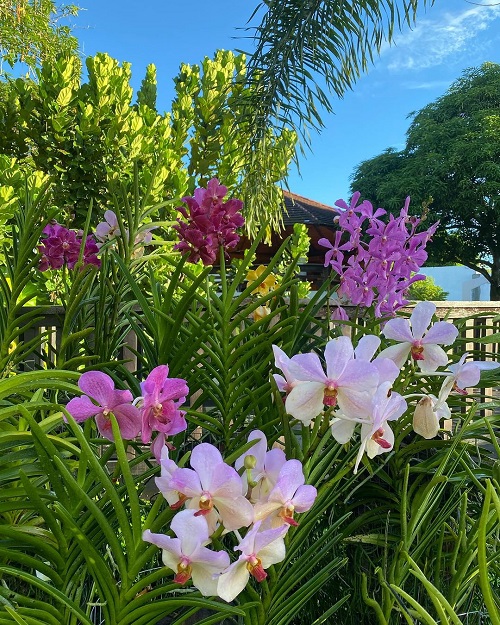Not sure which Perennials You Should Plant in November to keep them safe from the dangers of frost? Well, we have the best ones for you!
The 11th month of the year may seem like an unusual time for gardening in some regions. Still, getting your hands in the soil and preparing for the upcoming seasons is a chance you must not miss! Depending on your USDA hardiness zones, here are the best Perennials You Should Plant in November!
Learn about how to grow mums as perennials here
Perennials You Should Plant in November
1. Daylilies
Botanical Name: Hemerocallis
- Southern Zones (8-11): In warmer climates like USDA zones, 8-11, November can be an acceptable time to plant Daylilies as the ground is not frozen and temperatures are milder.
- Transition Zones (7): If you’re in zone 7, November planting is risky but possible. Make sure to mulch well to protect the roots from potential frost.
Daylilies are adaptable perennials, and their versatility allows them to thrive in colder and milder regions, ensuring healthy growth and colorful summer blooms.
72 Best Daylily Varieties | Top Daylily Types
2. Lenten Roses

Botanical Name: Helleborus orientalis
- Southern Zones (7-9): You can consider planting Lenten Roses in these warmer zones in November. The milder winters allow the plants to establish their root systems before the colder temperatures hit.
- Transition Zones (5-6): It’s a bit riskier to plant in November in these zones, but if you do so early in the month and take precautions like adding mulch for insulation, it could be successful.
These shade-loving perennials are early bloomers, and by planting them now, you can enjoy their delicate, cup-shaped flowers in late winter or early spring.
3. Canna Lily

Botanical Name: Canna indica
- Tropical and Subtropical Zones (10-11): In these zones, November is an acceptable time to plant Canna Lilies as the ground never freezes and the temperatures remain warm year-round.
- Warm Temperate Zones (8-9): It’s feasible to plant Canna Lily in November in these zones. However, it’s advised to get them in the ground early in the month and to add mulch for a little extra protection from chillier temperatures.
The warmth of these zones allows canna lilies to establish strong roots for a burst of tropical color during the growing season.
17 Tall Canna Lily Varieties + How Tall Do Canna Lilies Grow?
4. Coral Bells
Botanical Name: Heuchera spp.
- Mild Zones (7-9): In these regions, planting Coral Bells in November is generally acceptable. The moderate climate allows for easier root establishment before winter sets in.
Their stunning foliage and bell-like flowers benefit from the mild conditions to establish themselves for spring beauty.
5. Hibiscus
Botanical Name: Hibiscus rosa-sinensis
- Tropical Zones (10-12): November can be an appropriate time to plant Hibiscus in these warm zones. The climate is conducive for year-round planting.
- Subtropical Zones (9): November planting is possible but less ideal. If you plant this month, focus on early November and be prepared to protect the plants from unexpected cold snaps.
These perennials produce large, showy flowers that can continue to bloom throughout the year.
6. Orchids
Botanical Name: Orchidaceae
- Tropical Zones (10-12): In USDA Zones 10-12, the temperature rarely drops below 30°F, making these zones suitable for planting orchids in November. The moderate climate helps the plant to flourish without the risk of freezing.
As the seasons progress, your outdoor orchids will reward you with a continuous display of their flowers, making your garden stand out!
Note: Growing orchids indoors in November is also rewarding. By paying attention to factors like temperature, light, watering, and humidity, you can enjoy these exotic beauties year-round, irrespective of your USDA zones!
20 DIY Orchid Pot Ideas You Must Try!
7. Bird of Paradise
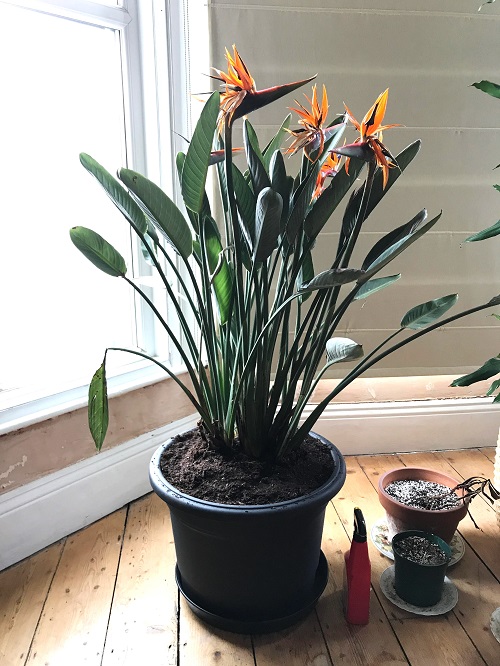
Botanical Name: Strelitzia reginae
Tropical Zones (10-12): The temperature rarely falls below 30°F, making these areas optimal for planting Bird of Paradise, even in November. These regions generally experience milder winters, providing a hospitable environment for this tropical plant.
This tropical perennial boasts banana-like leaves. As the months pass, your garden will be graced with its stunning flowers!
8. Toad Lily
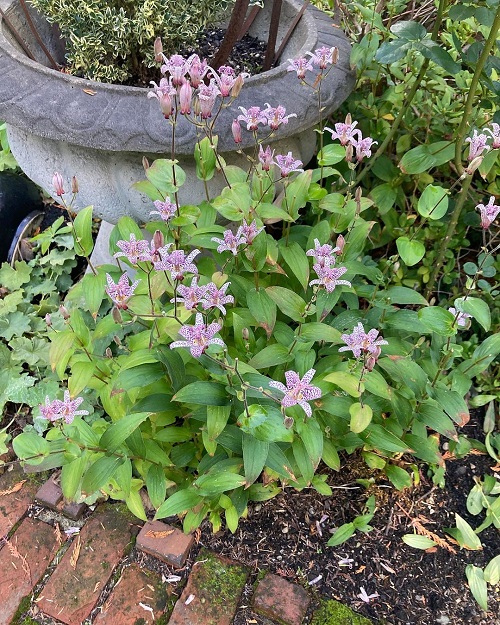
Botanical Name: Tricyrtis hirta
Tropical Zones (7-9): Toad Lilies can thrive due to the moderate to cool climates. These zones offer the right balance of temperature and soil conditions suitable for the growth.
These unique perennials will spend the cooler months establishing their presence. When the next growing season arrives, they’ll surprise you with their delightful blooms.
9. Bleeding Heart Vine
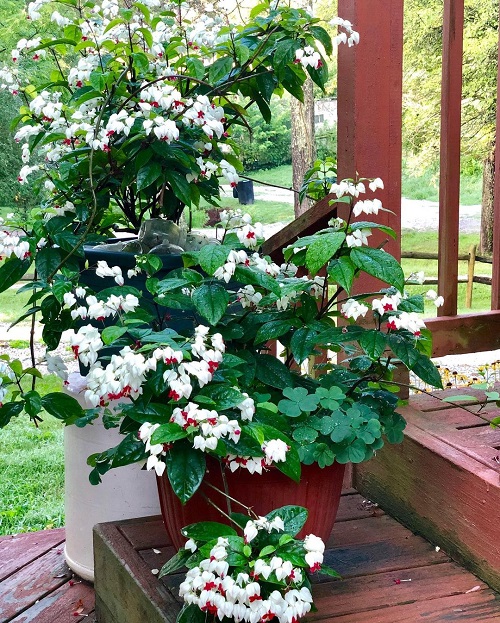
Botanical Name: Clerodendrum thomsoniae
Tropical Zones (10-11): These zones offer a frost-free environment, making them ideal for planting Bleeding Heart Vine, including in November. The warmer temperatures and mild winters support healthy growth.
Subtropical Zone (9): While Zone 9 isn’t perfect, it can be possible to grow Bleeding Heart Vine here with extra winter care, such as mulching or using frost blankets.
This tropical perennial grows tubular flowers resembling bleeding hearts in a vine form. Planting it in November allows the vine to set its roots properly.
Bleeding Heart Flower Meaning and Facts
10. Japanese Painted Fern
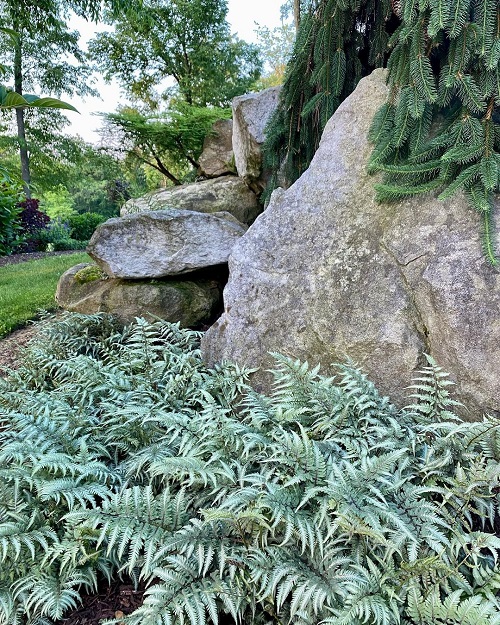
Botanical Name: Athyrium niponicum
USDA Zones (4-9): In USDA Zones 4-9, the Japanese Painted Fern can grow well due to the moderate to cool climate conditions. These zones offer a favorable environment for it to thrive.
Japanese Painted Ferns, with their delicate, silver-gray fronds adorned with subtle purple and red hues.
11. Toadflax

Botanical Name: Linaria vulgaris
USDA Zones (7-9): Toadflax can thrive in various climate conditions ranging from moderate to relatively warm.
Toadflax, also known as “mini snapdragons,” is a charming perennial that produces slender spikes of snapdragon-like flowers in various colors.

